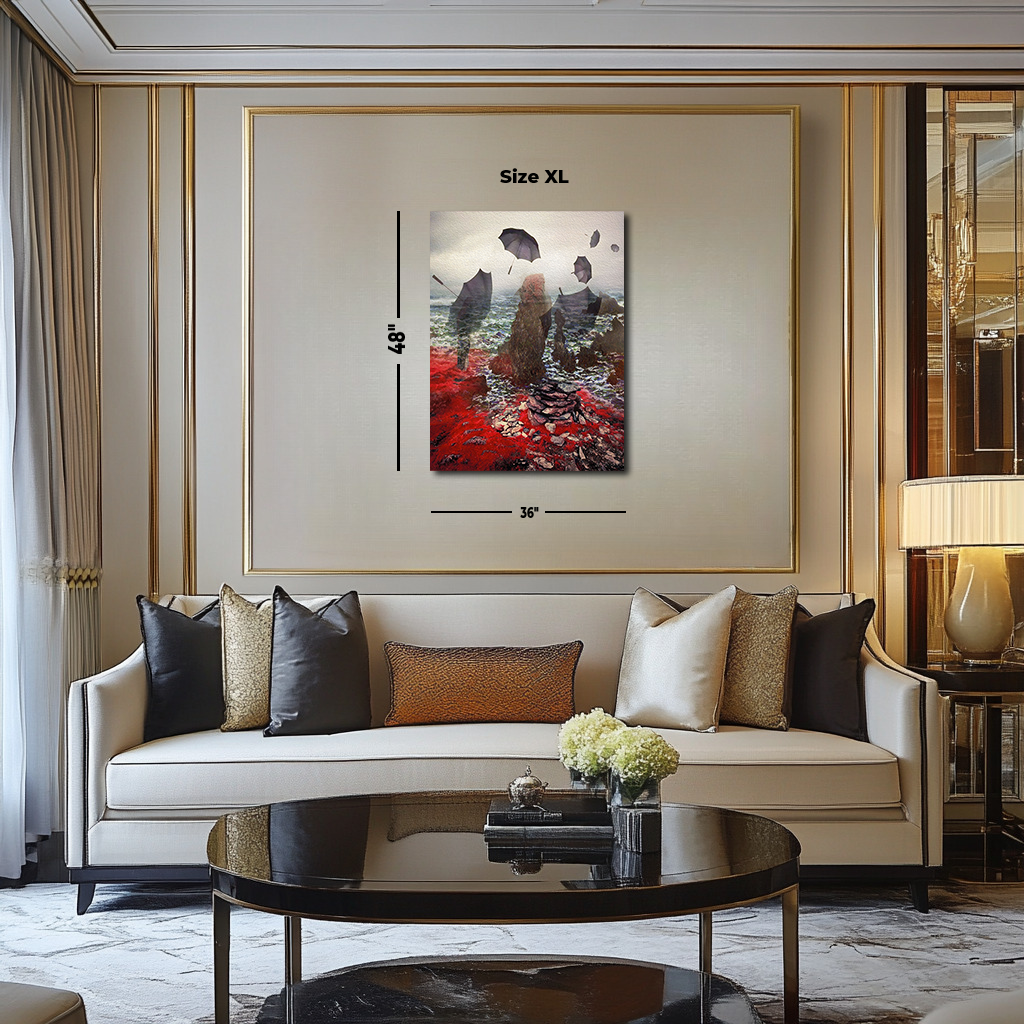The Phantom of Port-Coton: Windswept Echoes
"The Phantom of Port-Coton" reimagines Monet’s Belle-Île seascape as a surreal scene of upheaval and transience. The dark sea churns beneath a sky where black umbrellas drift helplessly, symbols of lost shelter and control. Jagged rock formations stand against the tide, yet the fiery red earth hints at turmoil beneath the surface.
This artwork reflects on impermanence—the wind carries away the past, the sea reshapes the land, and time erases what was once firm. Through deep reds, ominous blacks, and ethereal grays, this piece captures both the relentless power of nature and the fragility of human existence.
Please see Below for Details…
Hotline Order:
Mon - Fri: 07AM - 06PM
404-872-4663
This conceptual reimagining of Pyramids of Port-Coton, Belle-Île by Claude Monet transforms the rugged seascape into an eerie, dreamlike vision of chaos and transience. The original piece, painted in 1886, depicted the jagged rock formations of Belle-Île, an island off the coast of Brittany, where Monet captured the relentless energy of the sea. Here, that force is intensified, infused with surreal elements that symbolize loss, instability, and the unseen forces that shape our world.
The landscape is fragmented—sharp, brooding rock formations rise from a sea that seems both liquid and solid, caught in a moment of violent upheaval. The sky, once a mere backdrop, is now a dynamic force, carrying black umbrellas through the air like lost memories, each one an emblem of something once held but now abandoned. The sea crashes endlessly against the rocks, yet the fiery red ground suggests a different kind of turbulence, as if the earth itself has absorbed the passion and fury of time.
The color palette in this piece carries significant meaning. The deep reds, rarely found in Monet’s original seascape, symbolize both destruction and renewal, passion and chaos. The dark umbrellas contrast against the pale, misty horizon, evoking a sense of displacement, as if remnants of human presence are being scattered by the wind. The dark sea, nearly black in areas, adds a sense of depth, a void where the past dissolves into an uncertain future.
As an artist, I sought to interpret Monet’s stormy Belle-Île not just as a place, but as an emotional landscape—one where elements of nature and human fragility intertwine. The umbrellas are symbolic of shelter and protection, yet here they are adrift, caught in the winds of fate, unable to shield from the inevitable. The jagged rocks, seemingly immovable, are nonetheless weathered by time and tide, much like the struggles and memories we carry.
The artistic message embedded within this work is one of impermanence. The sea erases footprints, the wind carries away possessions, and the world reshapes itself in ways beyond our control. Yet, in this chaotic transformation, there is beauty—a reminder that even the fiercest storms eventually pass, leaving behind something new, something different, something changed.
Add your review
Your email address will not be published. Required fields are marked *
Please login to write review!
Looks like there are no reviews yet.








